When it comes to restoring and protecting native forests, one of the first steps is sourcing land that can be revegetated. While Greenfleet restores different types of land, working with dedicated landholders is a key way that we deliver our work.
Two such people are Jasmin and Duncan Taylor who are working with us to restore their property on Ngarrindjeri Country, south of Adelaide. Their commitment ensures Greenfleet can continue restoring nature, growing habitat, and removing carbon in the region. With over 550 native forests growing across Australia and New Zealand, our relationships with landowners are a vital part of growing our forests, restoring nature, and growing climate hope.
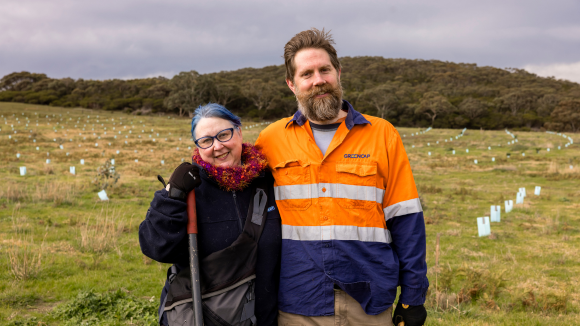
A Passion for Environmental Action
The Taylors purchased their 30-hectare property on Ngarrindjeri Country, south of Adelaide in 2019. Previously used for farming, their dream was to return the land to its original state. They wanted to create a property that provided healing benefits to the environment while supporting native wildlife living in adjacent forests.
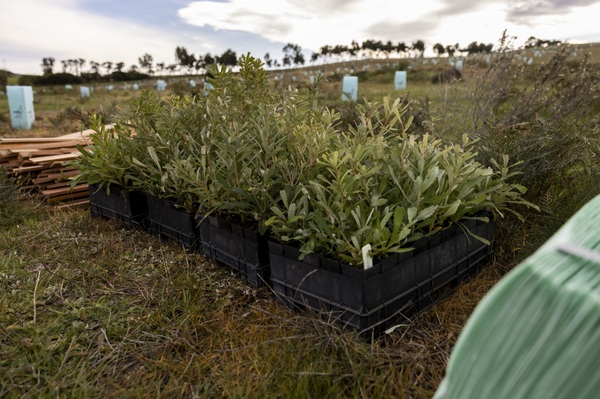
Their property sits opposite Cox Scrub Conservation Park, an important protected habitat for native birdlife. Duncan and Jasmin were motivated to create a wildlife corridor that extends the habitat provided by Cox Scrub and connects to the remnant vegetation at the top of the Bull Creek property. Discussions between the Taylors and Greenfleet, uncovered deeply aligned values and they were impressed with our genuine enthusiasm for the project. Following a site visit by Greenfleet’s Revegetation Team, the process of reforesting 14 hectares began.
“We are grateful to be able to connect with real people who genuinely seem to share our passion and appreciate our philosophies and intentions.”– Dr Duncan Taylor, landholder at Bull Creek.
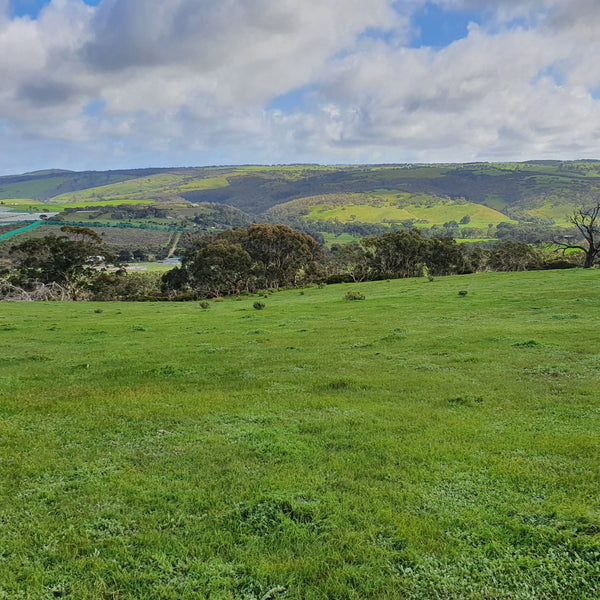
Delivering Benefits To Nature And Wildlife
When Greenfleet undertakes our reforestation projects, we carefully assess the correct ecosystem types and plant species needed to restore the land. At Bull Creek, the goal was to plant species that would encourage the endangered ecosystems of peppermint box grassy woodland and Kangaroo Island narrow-leaved mallee to return.
In 2023 the project began, with Greenfleet planting 30 different locally native species at Bull Creek. These include black paperbark (Melaleuca lanceolata), varnish wattle (Acacia verniciflua) and pink gum (Eucalyptus fasciculosa). These and other species will grow to provide bird habitat for the critically endangered southern emu-wren, the vulnerable diamond firetail, and the nationally threatened chestnut-rumped heathwren.
Certain tree species have also been planted to encourage the return of pygmy possums, known to the Cox Scrub Conservation Reserve. These animals are endangered, making the restoration of their habitat vital to their ongoing survival.
Long-term Climate Action
Importantly, the forest growing at Bull Creek is legally protected for 100 years. An on title legal agreement has been established, ensuring the land can’t be cleared and these trees can develop into the thick vegetation required for birds to safely forage for insects.
While delivering these vast environmental benefits, the forest will remove over 7,700 tonnes of carbon from the atmosphere in its lifetime. This is equivalent to taking 1,800 medium sized cars off Australia’s road for a whole year.
Removing carbon from the atmosphere is vital in the fight against climate change and forests are one of the best solutions we have to do this. Greenfleet uses the Full Carbon Accounting Model (FullCAM) to measure the carbon uptake at each of our reforestation sites. This model was developed by the CSIRO.
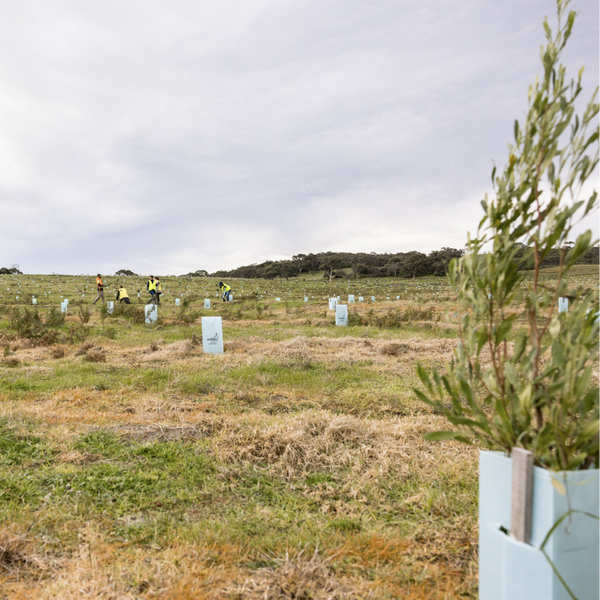
Watching Environmental Benefits Grow
So far, Duncan and Jasmin are thrilled with the progress of the restoration and are looking forward to seeing a native forest fill the landscape. Without cattle grazing the property, even the understory growth in the remnant scrub began to grow almost immediately.
The revegetation approach taken by Greenfleet was to plant alternating rows of seedlings and seeds directly into the soil. By 2024, some of the seedlings were already around two metres tall, well exceeding the tree guards added to protect the young trees from browsing. Additionally, areas of direct seeding are germinating and beginning to grow into seedlings themselves.
While the initial revegetation component of the project is complete, this is only one step in Greenfleet’s approach to restoring native ecosystems. We will continue to monitor the project, determining if any interventions are required throughout the establishment period to ensure it grows into a resilient, biodiverse forest.
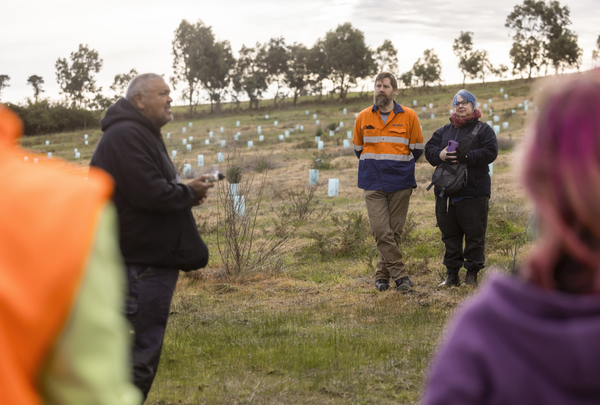
Greenfleet Supporters At Bull Creek
Greenfleet is fully funded by thousands of individuals and hundreds of organisations wanting to see authentic climate action. While the vast majority of the work at Bull Creek is being completed with our South Australian project partners, Second Nature Conservancy, we have also hosted some of our corporate supporters at the site to give them a first-hand experience in planting and guarding native trees.
At these events, we have also been joined by Ngarrindjeri man, Mark Koolmatrie, to Welcome us to Country and share his knowledge about the area. On his second visit to the site in July 2024, Mark reflected on how the site was transforming thanks to Greenfleet’s work and the significance of returning native species to Country.
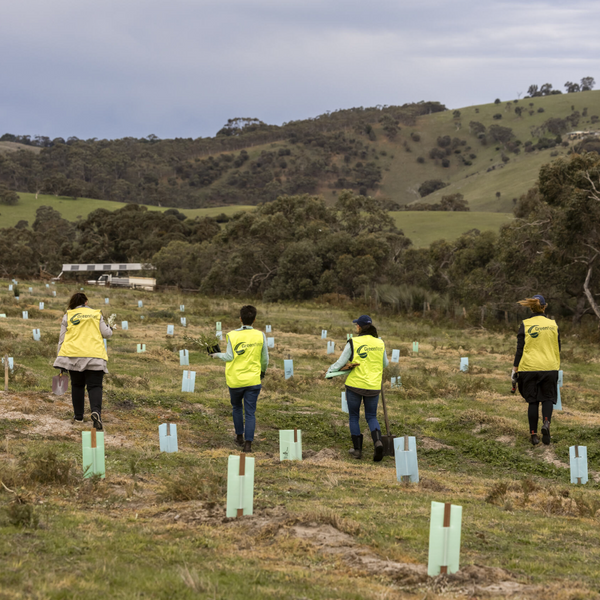
Working With Greenfleet
Greenfleet seeks to work with landholders who are passionate about nature restoration and returning biodiversity to their region. Native revegetation enhances soil and water quality and, by planting native trees, landholders can create habitat for native wildlife, including endangered species.
Reflecting on the partnership with Greenfleet, Duncan notes, “We would definitely recommend speaking to Greenfleet if you are a landholder who is thinking about doing some revegetation. The care that Greenfleet has not only for the land, but in working with the landholder is amazing, and we have really felt part of the process the whole way along.”
Greenfleet is proud to be working with Jasmin and Duncan, whose passion for nature restoration and growing biodiversity reflects our own. Their dedication, and that of our many landholders, means we can continue growing climate hope and providing habitat for our wildlife for generations to come.
To learn more or make an enquiry about revegetating your property with Greenfleet, click here.
Read more about our work at Bull Creek here.


